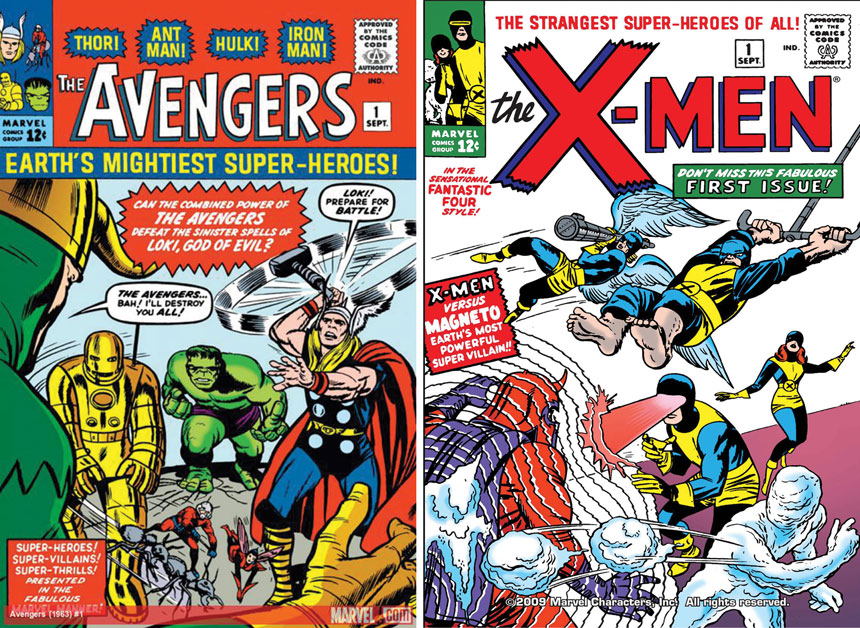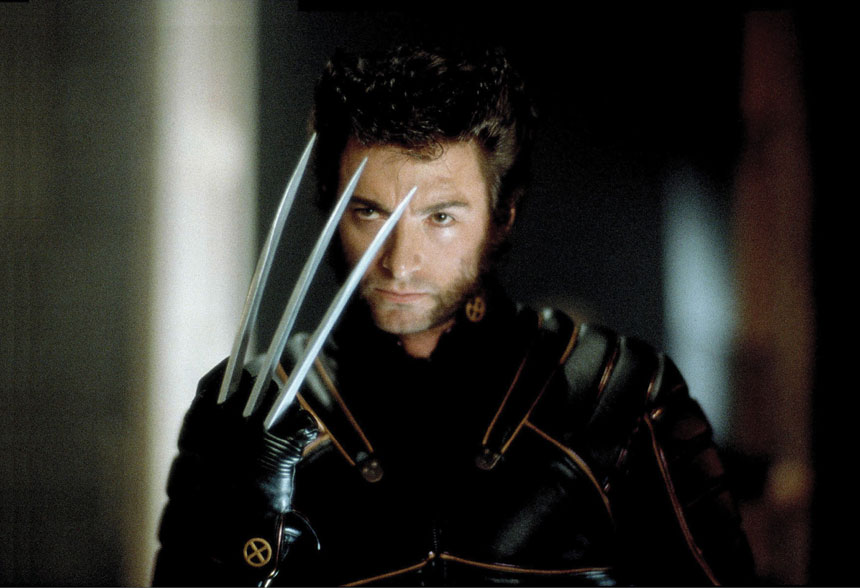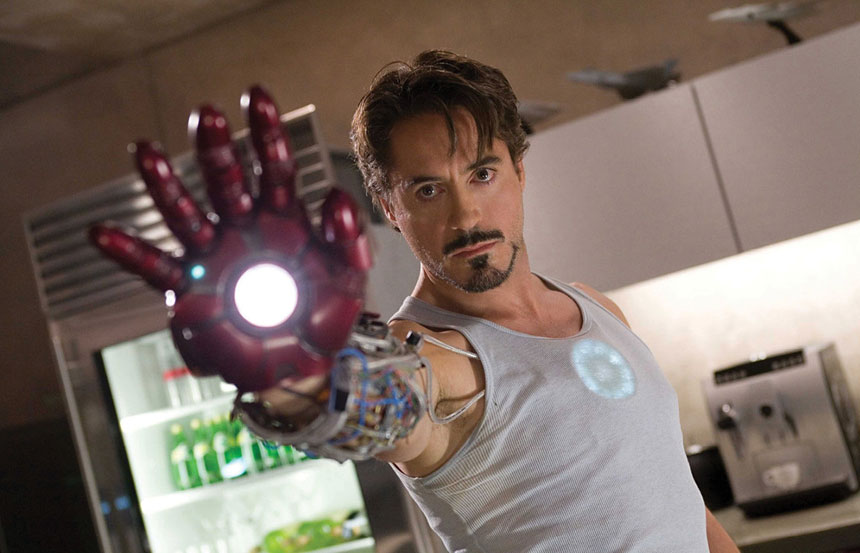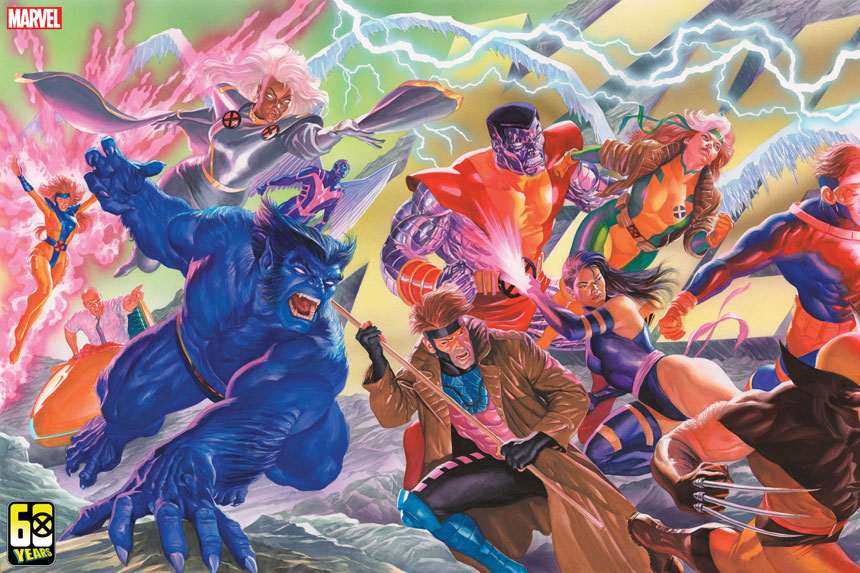It’s September 1963. President John F. Kennedy is still in office. Fewer than 16,000 American military personnel are in Vietnam. The Beatles are weeks away from recording “I Want to Hold Your Hand.” And readers at newsstands around the country are being introduced to two very special groups in the pages of Marvel Comics. One is an all-star team composed of the company’s biggest names, and the other is a wholly new team from a very special school. They are the Avengers and the X-Men, and they will one day be part of the biggest brand in entertainment.
It all started, as many Marvel things did then, with writer Stan Lee and artist Jack Kirby. The veteran pair had launched the “Marvel Age” of comics in 1961 with Fantastic Four. The two would go on a multi-year tear that saw them create characters like the Hulk, Black Panther, and the Silver Surfer. Stan’s brother Larry Lieber joined them in creating Ant-Man and Thor. That trio, along with Don Heck, created Iron Man. Lee and artist Steve Ditko also created Spider-Man and Doctor Strange, while Lee and artist Bill Everett created Daredevil.
And in the midst of the company’s creative surge, Lee and Kirby put together (or, one might say, assembled) two other title concepts.
The Avengers brought together pre-existing Marvel characters like the Hulk, Thor, Iron Man, Ant-Man, and the Wasp. It was in some ways Marvel’s answer to the Justice League of America at their “Distinguished Competition,” crosstown comic book rivals DC Comics, which featured the likes of Superman, Batman, and Wonder Woman. As the Avengers came together, Captain America, a 1940s Kirby/Joe Simon co-creation, joined the team as well. The gathering of major characters struck a chord with fans.
One such fan was Tom Brevoort. His first encounter with the team came courtesy of the local library, where he discovered Son of Origins of Marvel Comics, a collection of key first issues. Years later, after landing an internship with the publisher in 1989, he took a job in editorial. Today, he’s Executive Editor and Senior Vice President of Publishing at Marvel and has overseen Avengers titles since 1997. Perhaps more than anyone, he understands the appeal of the team. “Within the Marvel Universe, the Avengers are the varsity, the A-Squad,” he says. “They’re the people who you call in when something goes wrong, the best crisis-response unit in all the world. Other teams have specific specialties and areas of concern, but the Avengers are all-encompassing, drawing from the best of the best across the Marvel Universe.”
The planetary scope of Avengers stories was one of the key factors in the growth of the team. During the 1970s, universe-shaking conflicts like the Kree-Skrull War, the Celestial Madonna arc, the Korvac Saga, and a multi-title battle against the mad Titan Thanos kept the team of superheroes in the forefront of Marvel’s publishing.
Brevoort acknowledges that a huge canvas is one thing that drives The Avengers. He says, “While not every Avengers story needs to be an epic, their best adventures tend to have some scope and scale to them. It’s right there in the legend [at the top of the first page]: ‘To fight the foes no single superhero could withstand!’ While the Avengers will face any hazard or situation that happens to crop up, their stock-in-trade is extinction-level events. Every Avengers story should be something that could be a line-wide crossover event, with that manner of far-reaching stakes and scale.”
Screenwriter and Eisner Award-winning comics writer Gene Selassie agrees. Selassie discovered the Avengers team with 1979’s issue #189. The comic, “since its inception, has featured the best qualities you find in other books,” he says. “The family dynamic of the Fantastic Four, the soap-operatic drama of The X-Men, the extinction-level-event villains of the Justice League, all rolled into one. I love that a street-level character like a Hawkeye or Falcon or Shang-Chi can fight world-threatening menaces alongside Thor, Captain Marvel, and Iron Man.”

(© Marvel Entertainment; Pencils by Jack Kirby)
As the Avengers were facing larger and larger galactic threats, the X-Men faced a different journey in the early 1970s. Their biggest foe for a while was the looming threat of cancellation. The X-Men were characters who had been born with their powers as a next step in human evolution; as a consequence, “normal” humans tended to hate and fear them. Nevertheless, the X-Men protected humanity despite being outcasts.
In 1970, after 66 issues, Marvel elected to stop producing original X-Men stories. However, knowing that there was value in the concept, the publisher simply ran reprints of old tales in the comic, essentially doing reruns through issue #93 in 1975. That year, Marvel attempted to relaunch the book with Giant-Size X-Men #1. The special by writer Len Wein and artist Dave Cockrum rebooted the concept by introducing a number of international team members, such as the Kenyan American Storm, the Russian-born Colossus, and a Canadian hero who had first appeared the year before in a Hulk story written by Wein, Wolverine.
Comic book writer and screenwriter Justin Peniston, who wrote for the Avengers Assemble animated series, was able to see himself in the new X-team. He says, “The X-Men was my first exposure to a truly ethnically diverse superhero team … as they appeared in Giant-Size X-Men #1, they had Storm, Thunderbird, and Sunfire — minorities all. That was and remains important.”
The new team drew immediate attention, and the comic resumed new adventures with the fresh cast in issue #94. Of the original line-up, only team leader Cyclops remained. Cockrum, who had built his reputation as an ace character and costume designer at DC Comics, drew with a cinematic style that made the book look exciting and different. The new X-Men were diverse, occasionally volatile, and acutely aware that the world hated them because of their mutant abilities. Wein passed the writing reins to a young writer named Chris Claremont later that year, and that’s when the team’s rocket-ride to a wider audience truly took off.
The 1980s offered both a creative and financial boom for the comics industry. The X-Men opened the decade with one of the most popular, controversial, and creatively influential stories in the history of mainstream comics: The Dark Phoenix Saga. The story by Claremont and artist John Byrne ran throughout 1980 in Uncanny X-Men #129 through #137, and it sees the telekinetic Jean Grey struggle with being the host of the massively powerful Phoenix entity. At the climax of the story, Jean sacrifices her own life for the good of the universe.
Fans were stunned, critical response was strong, and X‑Men solidified its reputation as a series where anything could happen. Peniston recalls, “I read Uncanny X‑Men #137 for the first time when I was 9 or 10 years old, in the Post Exchange while my mom was shopping. It was the first comic ever to touch me. My mom came over to get me and found me crying. That comic changed my understanding of what comics could be. I’ll never forget that.”
On the back of strong sales, Marvel took the opportunity to turn both the Avengers and the X-Men into franchises. Throughout the decade, X-Men would spin out New Mutants (featuring a new class of young heroes), X-Factor (the original five X-Men from 1963, including a resurrected Jean), Excalibur (a U.K.-based team), and Wolverine, who had become the line’s break-out character. The Avengers would open a California branch with West Coast Avengers and spin off a variety of team members into mini-series, like Hawkeye and The Vision and Scarlet Witch, both of which would provide critical material for later on-screen adaptations.


The franchising at Marvel, along with important work done at DC Comics and various independent publishers, ushered in what many scholars in the field refer to as the Modern Age of Comics.
At the dawn of the 1990s, Uncanny X-Men was the bestselling book in the industry. In their series of specials saluting the end of the ’80s, MTV hailed it as Coolest Comic Book of the Decade. Hot young artists like Jim Lee (no relation to Stan), Rob Liefeld, and Whilce Portacio had ratcheted up the excitement surrounding the books.
In 1991, Marvel launched an initiative that would be known as Mutant Genesis. New Mutants was cancelled and replaced by the Liefeld-penciled X-Force. Portacio assumed art duties on Uncanny X-Men (with issue #281), and Jim Lee moved over to draw the new “adjectiveless” X-Men. The new number ones came in multiple versions: X-Force copies were bagged with one of five trading cards; X-Men offered four covers that made up one complete image along with a fifth deluxe version that included all the images as a fold-out. The new books obliterated sales records; X‑Force #1 sold in excess of five million copies, while X‑Men #1 passed eight million. Comic book humans may have feared the mutant heroes, but fans couldn’t get enough.
The Avengers took a back seat at the House That Stan and Jack Built during the 1990s. With record-smashing sales and an extremely popular animated series on Fox, the X-Men became the face of Marvel. Unfortunately, the decade also saw a massive crash in the comics market, driven in part by speculators looking to make a quick buck on “event books.” The ripple effects caused hundreds of comic shops to close. At the same time, various issues at Marvel forced the publisher into Chapter 11 bankruptcy protection in 1996.
During this turbulent decade, Marvel licensed the rights to several characters to different film studios; Sony snagged Spider-Man, while 20th Century Fox landed the X-Men and Fantastic Four. The X-Men film fell under the purview of producers Richard Donner and his then-wife Lauren Shuler-Donner; he had directed the first Christopher Reeve Superman film and the Lethal Weapon series, and she had produced hits like Pretty in Pink and Dave. Like the comics and animation before it, 2000’s X-Men film was a hit. Among the associate producers was a recently promoted assistant of producer Shuler-Donner; his name was Kevin Feige.
Feige impressed Marvel brass to the degree that he was hired for the nascent Marvel Studios; he became its president of production by 2007. With the mighty mutants a hit for Fox, Feige harnessed the power of the characters who were still in Marvel’s portfolio and pitched a series of films that would introduce Iron Man, Captain America, and Thor, culminating in a movie in which the characters came together as The Avengers. At the time, such a play was considered a massive gamble, but to question whether it succeeded would be to admit you’ve slept through the last decade and a half.
Soon after Iron Man became a worldwide hit, The Walt Disney Company acquired Marvel Entertainment for $4 billion; with Feige at the helm, Disney rode their Marvel Cinematic Universe to unparalleled heights as it became the highest-grossing film franchise of all time. When Disney finalized their purchase of 21st Century Fox in 2019, they paved the way for the X-Men and Avengers to finally share the screen. It’s not certain when this will occur, but smart money points toward the Avengers: Secret Wars film that’s scheduled for May 2027.
So how have two strikingly different groups stuck around in public consciousness for so long? One notion is that their very differences open them up to vast audiences. The Avengers are the all-stars while the X-Men are the outcasts, and each team offers such a variety of colorful characters that every fan can claim one as their own. The Avengers represent the best of the best, but the X-Men stories contain a central metaphor that draws in anyone who has ever felt different. By creating both teams, the talented creators at Marvel are only doing what any smart business would: offering something for everyone.
At their 60th anniversary, two simple comic book premises have evolved into world-dominating brands supported by comics, animation, movies, apparel, and countless toys. Whereas the casts might have only been known in fan circles in previous decades, every school kid today knows Iron Man and Wolverine. While the groups have their differences, they have one thing in common: They’ve woven themselves into the fabric of American culture. If Marvel has proven anything over the 60 years of the teams’ shared success, it’s that heroic deeds never go out of style.
This article is featured in the September/October 2023 issue of The Saturday Evening Post. Subscribe to the magazine for more art, inspiring stories, fiction, humor, and features from our archives.
Become a Saturday Evening Post member and enjoy unlimited access. Subscribe now



